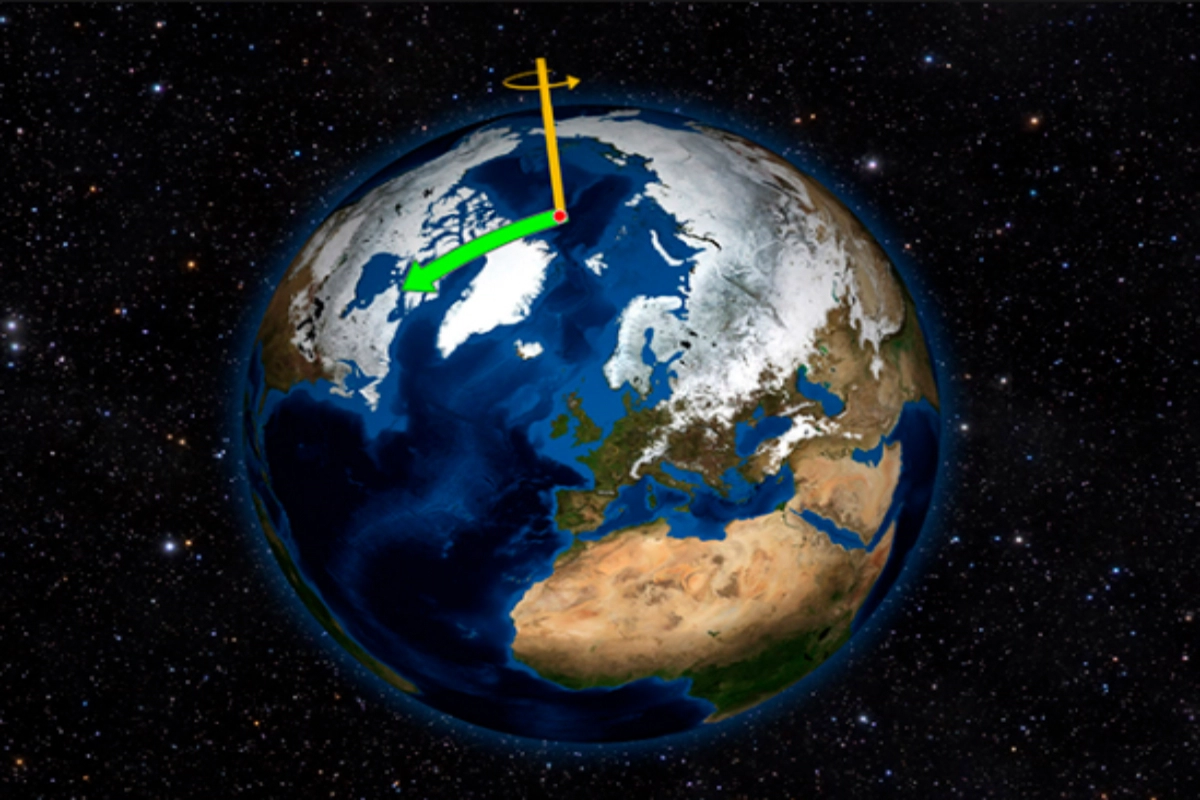Earth Pole Shift: India’s water shortage may be to blame for a small shift in the Earth’s pole. According to a study that appeared in Geophysical Research Letters, between 1993 and 2010, people on Earth drew so much water out of the groundwater table that it caused the pole to drift at a rate of 4.36 centimetres per year. The third planet in the Solar System has tipped about 80 centimetres eastward as a result of Earth’s pole drift, according to the research article. “Earth’s pole has drifted toward 64.16 degrees E at a speed of 4.36 centimeters per year during 1993–2010 due to groundwater depletion and resulting sea level rise,” the paper read.
Rapid Groundwater Depletion and its Impact
The authors of the report claim that the significant anthropogenic contribution was brought about by the sea level rise. The rapid groundwater depletion brought on by increasing irrigation has been blamed for the rise in sea level. According to the research team, humans have removed 2,150 gigatons of groundwater from the planet, which is more than 0.24 inches of sea level increase. However, they have acknowledged that it is challenging to estimate the subsequent figure.
Must Read: President Draupadi Murmu Receives Warm Birthday Greetings from PM Modi and Leaders Across India
Understanding the Calculation of Earth’s Pole Tilting and its Relationship to Groundwater Redistribution
Let’s examine how the tilting is computed in order to comprehend the additional tilting of the Earth’s pole. By observing the rotational pole of the Earth, one may compute the tilt of the planet. This is the point around which the Earth revolves, also referred to as the Earth’s Axis. Polar Motion is a phenomenon that Earth scientists have discovered: the Axis shifts somewhat over time. The rotational pole of Earth undergoes significant variation. According to Ki-Weon Seo, a geophysicist at Seoul National University who led the study, “our study demonstrates that among climate-related causes, the redistribution of groundwater actually has the largest impact on the drift of the rotational pole.” “We show that the model estimate of water redistribution from aquifers to the oceans would result in a drift of Earth’s rotational pole, about 78.48 cm toward 64.16°E,” the paper read.
Must Read: International Yoga Day 2023: Embracing Mind-Body Connection! Yoga’s Role in Combating Depression
The Influence of Groundwater Distribution on Earth’s Spinning and Potential Climate Impact
Groundwater, according to the United States Geological Survey, is water that is found underground in saturated zones beneath the surface of the earth. The water table is the term for the saturated zone’s upper surface. Pumps are used to remove water for agriculture from this water table. Notably, water used for irrigation eventually seeps into bigger bodies of water, contributing to the sea level rise. It is important to be aware that the rotating pole’s position varies in relation to the Earth’s crust in order to comprehend how groundwater impacted the planet’s spinning. On our globe, the distribution of water has an impact on how mass is dispersed. Like when you add a tiny weight to a spinning top, it starts to spin a little bit differently as a result of the weight. Similar to how water travels about on Earth, our planet’s spin can also be slightly altered by water. According to research, the location of the water table has an impact on how the Earth spins. According to the researchers’ estimates from their study, the majority of the water was transferred between 1993 and 2010 between western North America and northwestern India. The Earth’s seasons won’t change as a result of the pole’s nearly 80-centimeter movement to the east, according to the experts. However, studies have warned that this alteration would have a huge long-term impact on the environment, causing enormous climatic changes!
Keep watching our YouTube Channel ‘DNP INDIA’. Also, please subscribe and follow us on FACEBOOK, INSTAGRAM, and TWITTER












